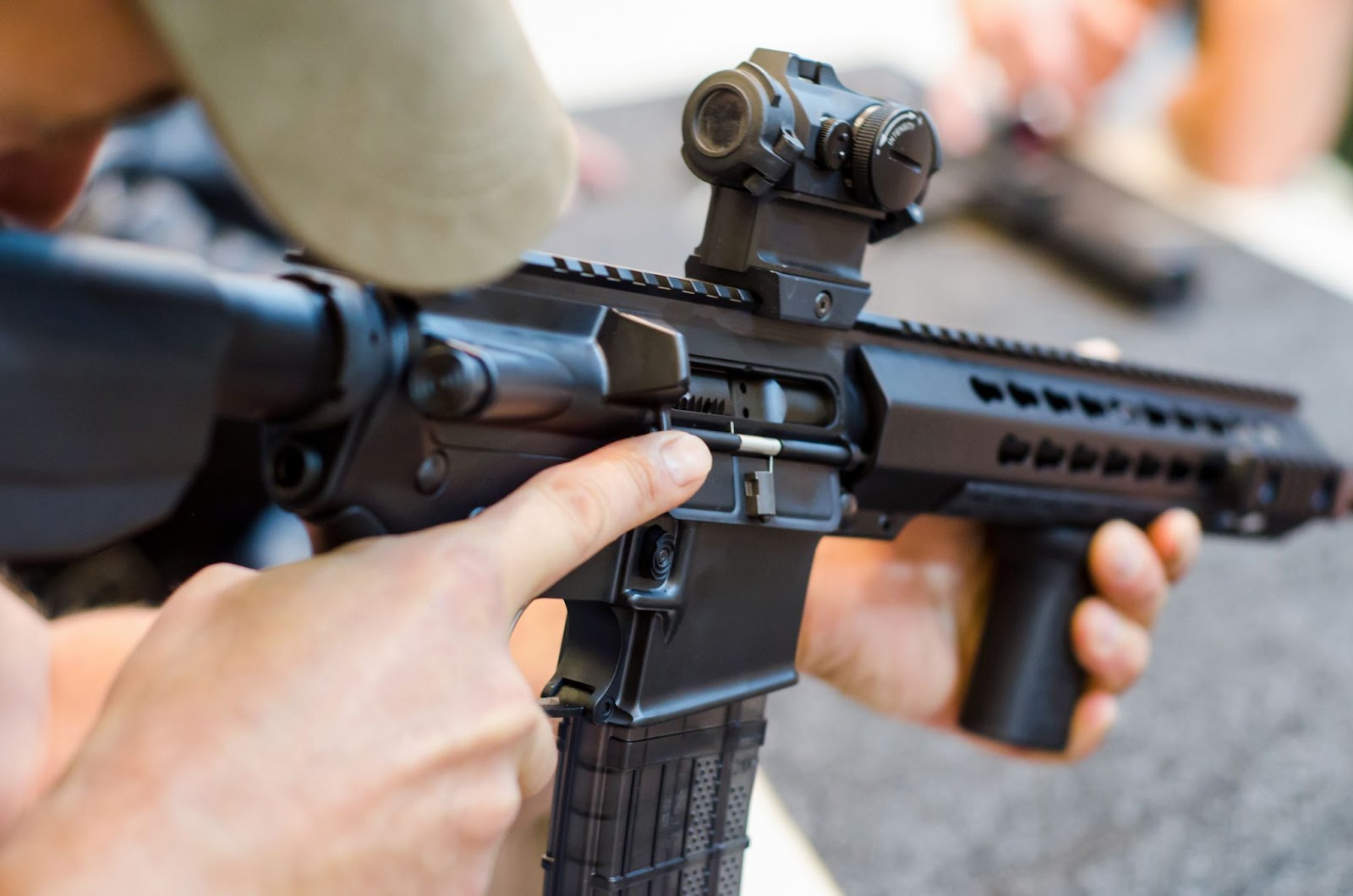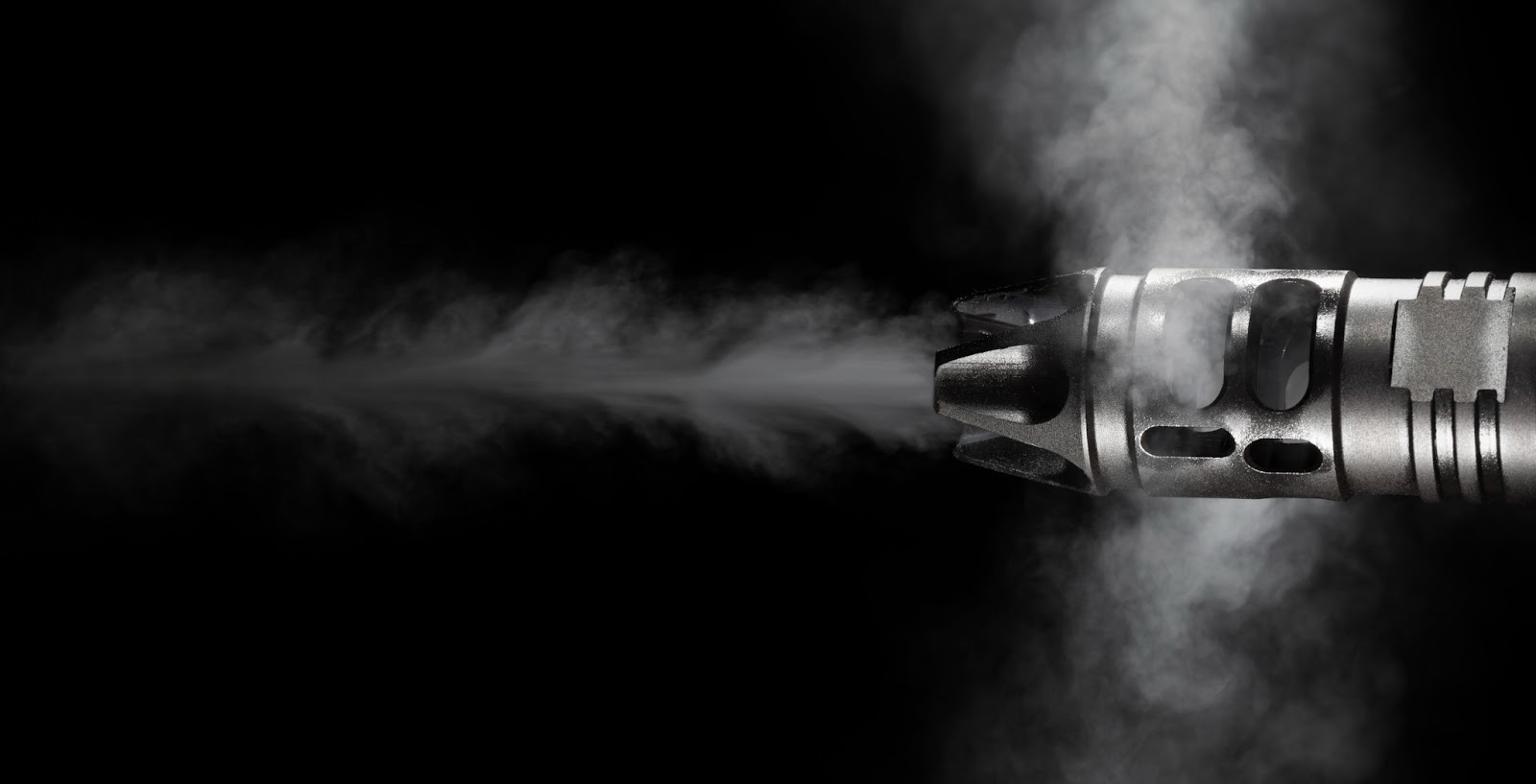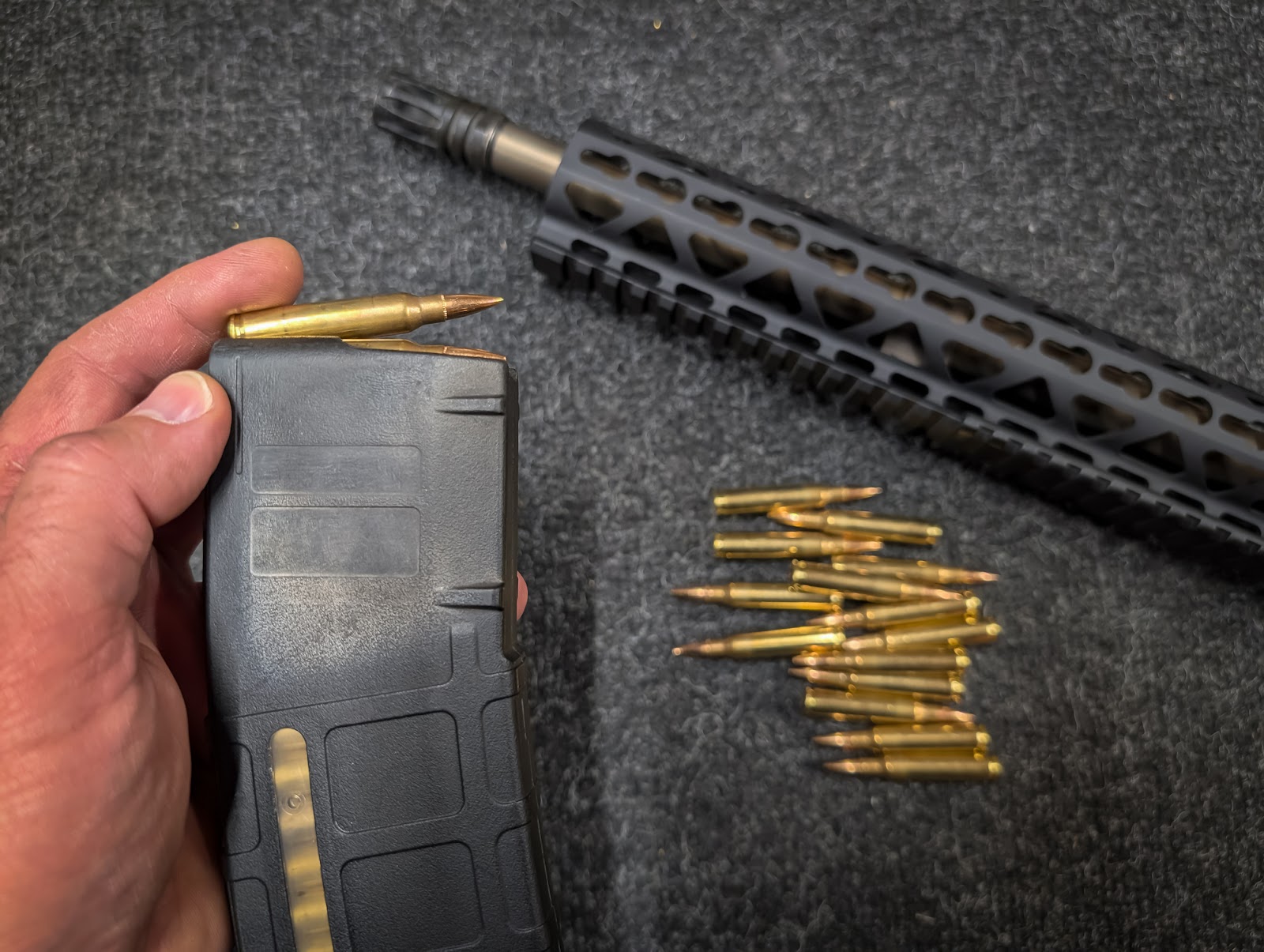
Recoil Reduction in Your AR-15
Let’s just have this out in the open. AR-15 rifles, especially those chambered in 5.56 (or .223) produce very little recoil to begin with. You don’t have to like it, but that’s just a fact.
Despite the fact that these are fairly high-velocity rounds, they shoot pretty light bullets, even on the heavier end, and produce very little recoil compared to other centerfire rounds. Besides, the rifle itself weighs several pounds, and that absorbs most of the rest of felt recoil too. But, if you’re interested in other ways you can keep a lid on recoil (and muzzle flip) here are some of the best ways.
Add a Muzzle Brake
Let’s start with the obvious, and also the one adjustment that most shooters make. Adding a muzzle brake to your AR will have by far the biggest impact on recoil reduction in the platform.
Most AR-15 rifles come with threaded barrels and many come with flash hiders installed. These muzzle devices help obstruct the muzzle flash, which in turn helps keep your sight picture clear.
This helps keep your target in focus, so you can make faster and more confident follow up shots. But with respect to felt recoil, they do very little.
A muzzle brake is a much more practical muzzle device, as muzzle brakes disperse the gasses vented at the muzzle more effectively. Most of them vent the gasses upwards, which pushes down on the muzzle. This directly counteracts the force of felt recoil, and most good muzzle brakes can reduce felt recoil by 30% to 40%. Some can even reduce felt recoil by as much as 50%, without adversely affecting shot power. For a cartridge that’s as light on recoil as 5.56 ammo is, that’s a huge deal. Just installing a muzzle brake can make it feel like there’s no recoil at all.
But where this really makes a noticeable difference is with respect to muzzle jump. Muzzle brakes actively use the force of recoil to push the muzzle down, which helps prevent it from jumping erratically during firing. This keeps your sights trained on target and helps prevent interruptions to the sight picture that can cause aberrations in accuracy.
By installing a good muzzle brake, you can reduce recoil and muzzle flip, making it easier to shoot longer with less fatigue, and also more practical to make faster, more accurate follow-up shots.

Up the Buffer Weights
Another suggestion some would make is to install an adjustable gas block so you can tinker with the gas system, but this is not a beginner friendly idea.
Instead of messing with gas system adjustments, it’s much more practical to just increase the buffer weight.
Many AR-platforms shooting 5.56 ammo have either a carbine buffer (which is lighter and better for shorter platforms) or a standard H1 or H2 buffer.
There are some heavier options, and adding weight to your rifle’s buffer system will help absorb recoil by increasing the resistance on the bolt carrier group as it moves rearward through the receiver.
Increasing the buffer weight can also offer the added benefit of improving extraction and smoothing out the cycling sequence, so it does more than just reduce recoil, though this is the main goal.
One note here is that this is a big thing to experiment with if your rifle is not chambered in 5.56. Other popular AR calibers, like 7.62x39mm and .300 BLK also tend to perform better with heavier buffer weights.
Shoot Lighter Ammo
Lastly, one more way to reduce recoil is simply to reduce the weight of the bullets you’re shooting. For instance, if you’re shooting 80 or even 75-grain 5.56 (which is a common weight) consider dropping down to 55 grains or so. The lighter the bullet (holding all else equal) the lower the muzzle energy will be and therefore the lower the overall felt recoil.
Scaling down your ammo weight is the simplest thing you can do to reduce recoil in your AR-15 rifle because it doesn’t require any modifications to the gun. The one caveat is that while you can add a muzzle brake and reduce ammo weight to lower recoil, don’t simultaneously lower bullet weight and increase buffer weight. The buffer system’s operability is tied heavily to bullet weight and if the two are not matched appropriately, while recoil might be lower, it might cause issues with extraction, ejection, or resetting the action properly.

Stock up on 5.56 Ammo Here
Now that you have some good ideas for how to reduce recoil in your AR-15, you can experiment with putting some of these into practice. While you’re here, restock on .223 or 5.56 ammo. We carry a ton of different target loads as well as defensive and sporting ammo from the top brands. Check them out on our website and get in touch with us if you have any questions.
